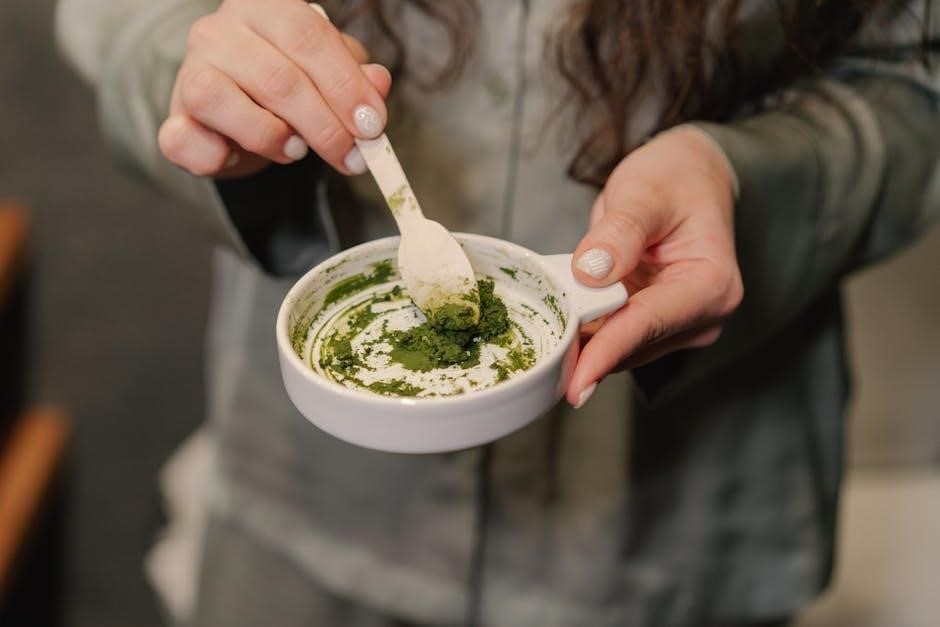Definition of Molarity
Molarity is defined as the number of moles of solute per liter of solution, expressed as moles per liter or mol/L. This unit of measurement is used to express the concentration of a solution. The formula for calculating molarity is M = moles of solute / liters of solution. Understanding the definition of molarity is crucial for solving molarity practice problems. It involves calculating the number of moles of solute and the volume of the solution in liters. The definition of molarity is a fundamental concept in chemistry, and it is essential for students to grasp this concept to solve problems involving molarity. With a clear understanding of the definition of molarity, students can confidently approach molarity practice problems and calculate concentrations with ease; Molarity is a vital concept in chemistry, and its definition is the foundation for more complex calculations.

Molarity Calculations with Liters and Moles
Calculating molarity involves liters and moles, using formulas and equations to find concentrations and amounts of substances in solutions, with precise measurements always.
Calculating Molarity with Given Moles and Volume
To calculate molarity with given moles and volume, we use the formula M = moles/volume, where M is molarity, moles is the amount of substance, and volume is in liters. We can plug in the values and solve for M. For example, if we have 0.5 moles of NaCl in 0.2 liters of solution, we can calculate the molarity as M = 0.5/0.2 = 2.5 M. This formula is essential in chemistry to determine the concentration of solutions. By using this formula, we can find the molarity of various solutions, which is crucial in many chemical reactions and experiments. The units of molarity are moles per liter, denoted as M or mol/L. Calculating molarity with given moles and volume is a fundamental concept in chemistry, and it has numerous applications in various fields.

Molarity Practice Problems with Answers
Molarity practice problems with answers provide students with exercises to calculate concentrations and solute amounts in solutions using various formulas and units accurately online.
Example Problems and Solutions
Example problems and solutions for molarity practice problems are available online, providing students with a range of exercises to calculate concentrations and solute amounts in solutions. These problems involve using various formulas and units, such as liters and moles, to determine the molarity of a solution. Students can practice solving problems with different types of solutes and solvents, and check their answers with the provided solutions. The example problems and solutions cover a range of topics, including calculating molarity from moles and volume, and converting between different units. By working through these examples, students can develop their problem-solving skills and improve their understanding of molarity and concentration. Online resources provide a convenient and accessible way for students to practice and review molarity concepts. This helps students to become proficient in solving molarity problems.
Concentration and Molarity
Concentration and molarity are related concepts in chemistry, involving solute and solvent interactions, with molarity expressing concentration in moles per liter of solution, using various units.
Expressing Concentration in Different Units
Expressing concentration in different units is crucial in chemistry, as it allows for accurate calculations and comparisons. The most common units used to express concentration are molarity, molality, and mass percentage. Molarity is defined as the number of moles of solute per liter of solution, while molality is the number of moles of solute per kilogram of solvent. Mass percentage is the mass of the solute divided by the total mass of the solution, multiplied by 100. Understanding how to convert between these units is essential for solving molarity practice problems, as it enables students to work with different types of data and solve a wide range of problems. This skill is also useful in real-world applications, such as chemistry research and industry. Various online resources provide practice problems and worksheets to help students master this concept.

Molarity Problems Involving Grams and Moles
Solving problems with grams and moles requires molar mass calculations and unit conversions to find molarity.
Converting between Grams and Moles
Converting between grams and moles is a crucial step in solving molarity problems, as it allows students to calculate the number of moles of a substance given its mass in grams. This conversion is typically done using the molar mass of the substance, which is the mass of one mole of that substance in grams per mole. By dividing the mass of the substance in grams by its molar mass, students can determine the number of moles. For example, if the molar mass of a substance is 50 grams per mole and the mass of the substance is 100 grams, then the number of moles is 100 grams / 50 grams per mole = 2 moles. This conversion is essential in calculating molarity, as it allows students to determine the number of moles of solute per liter of solution. Using online resources and worksheets, students can practice converting between grams and moles to develop their problem-solving skills. Additionally, understanding the concept of molar mass and its relationship to the number of moles is vital in solving molarity problems. With practice and experience, students can become proficient in converting between grams and moles, enabling them to tackle more complex molarity problems with confidence. Furthermore, mastering this conversion is essential in various fields of science, including chemistry and physics. Therefore, it is essential for students to understand and practice converting between grams and moles to succeed in their academic and professional pursuits.
Titration and Molarity
Titration involves calculating molarity of solutions using volume and concentration, with accurate results.
Endpoint and Equivalence Point in Titration
In titration, the endpoint and equivalence point are crucial concepts. The endpoint refers to the point at which the indicator changes color, signaling the end of the reaction. The equivalence point, on the other hand, is the point at which the amount of titrant added is just enough to react with the analyte. Understanding the difference between these two points is essential in calculating the molarity of a solution. The equivalence point is calculated using the formula M1V1 = M2V2, where M1 and V1 are the molarity and volume of the titrant, and M2 and V2 are the molarity and volume of the analyte. This concept is vital in solving molarity practice problems with answers pdf, as it allows for accurate calculations and results.
Guidelines for Solving Molarity Problems
Pay attention to units and multiply and divide carefully to solve molarity problems accurately using given formulas and equations.
Pay Attention to Units and Multiply and Divide
To solve molarity problems, it is essential to pay attention to the units used in the given information and to multiply and divide carefully.
Using the correct units, such as liters, moles, and grams, will help to ensure accurate calculations.
When multiplying and dividing, it is crucial to follow the order of operations and to cancel out units correctly.
This will help to avoid errors and to obtain the correct answer.
By following these steps, students can develop their problem-solving skills and become more confident in their ability to solve molarity problems.
The use of online resources, such as worksheets and practice problems, can also help to reinforce these skills and provide additional support.
With practice and attention to detail, students can master the skills needed to solve molarity problems.

and Final Thoughts
Mastering molarity practice problems enhances chemistry understanding and problem-solving skills effectively online.
Importance of Practicing Molarity Problems
Practicing molarity problems is essential for students to develop a deep understanding of chemistry concepts, including concentration and solute-solvent interactions. By working through numerous practice problems, students can improve their critical thinking and problem-solving skills, leading to better academic performance. Online resources, such as worksheets and practice exams, provide students with a wide range of molarity problems to practice, from simple calculations to complex titration problems. Regular practice helps students to identify and correct common mistakes, build confidence in their abilities, and develop a strong foundation for advanced chemistry topics. Additionally, practicing molarity problems helps students to understand the importance of units, significant figures, and precision in chemical calculations, all of which are crucial skills for success in chemistry and related fields, and can be applied to real-world scenarios and laboratory experiments.